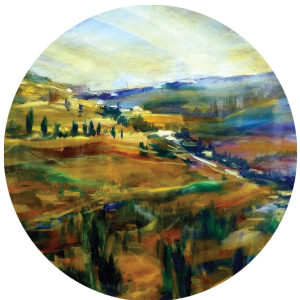Use Words with Care

I find myself writing with hope for joy and song as we once again approach Lag B’omer

Remembering last year’s tragedy, my heart searches for words; I find myself writing with hope for joy and song as we once again approach Lag B’omer.
Let’s note that this day — now the anniversary of the death of so many — is a shared yahrtzeit with the Tanna Elokai Rabi Shimon bar Yochai.
Revealing Worlds
The Zohar Hakadosh tells us about Rabi Shimon bar Yochai’s last day. He gathered his friends, Rabi Yehuda, Rabi Yosi, Rabi Chiya, and Rabi Yitzchak.
As they assembled around his holy countenance, he declared, “Behold it is an eis ratzon. I would like to rise to the Upper World with no shame. The words of kedushah that I have not yet revealed to the world are waiting to be disseminated and discussed. I would like to disclose them now so that I do not arrive in the Next World not having given over what was my chelek in Torah that I was charged to pass on to the world.”
The mystical account tells how Rabi Shimon was surrounded by a fire as he revealed the secrets of Torah. It is this flame that inspires the kedushah that we celebrate on this day.
But what of us women in 2022, for whom learning Kabbalah isn’t an appropriate aspiration? What does this day mean to us?
Much more than we may realize. Though the scope of sisrei haTorah revealed by Rabi Shimon is not ours to grasp, the profundity of the meaning he imparted into our lives should never be forgotten. In a world where the superficial reigns supreme, the stark contrast to our Torah lives is a jarring reality.
The world of Rabi Shimon transcends our day-to-day action to spheres beyond our comprehension. He taught that in the framework of a Torah life, the impact of our actions is eternal. His message bridges the world we live in to the one we are heading to — it gives us import and purpose every day of our lives.
Let’s take a look at Rabi Shimon’s insights into one specific mitzvah to glean inspiration for how we can use this day to jump-start our own increased avodas Hashem.
Sanctity of Speech
In the sefer Butzina D’Oraisa, the Tolner Rebbe quotes the sifrei Kabbalah that teach us that the 49 days of the Sefirah correspond to the sacred words of the tefillah of Ana B’choach. (There are six words on each line, corresponding to the six days of each week of Sefirah, with the seventh day of each week represented by the word at the end of each line.)
If we count 33 words, we’ll see that Lag B’omer, the 33rd day of the Omer, corresponds to the word “nahel,” which means “lead.” The Ari Hakadosh teaches that the gematria of the word nahel equals 85, which is the same as peh — “mouth.”
We’re taught that among his many other hakpados, Rabi Shimon was scrupulously vigilant with kedushas hapeh — the sanctity of what he released from his mouth.
Rabi Shimon teaches (Berachos 1:2) that Hashem had originally intended to create humanity with two mouths, one for mundane speech and one for Torah. But then “nimlach b’daato,” Hashem kiveyachol “royally deferred to His Intelligence” and surmised the following: The world will have enough trouble with one mouth of man — how much worse would two be!
The Tolner Rebbe also cites the following observation from the Pnei Menachem. Though Shas is rife with mentions of Rabi Shimon’s name, it never appears in Nedarim, the tractate that deals with the solemnity we must attach to our words. Though Rabi Shimon certainly learned and taught this masechta, it seems that his diligence in this area compelled him to ensure his name was not mentioned in connection to these matters.
The Gemara (Bava Metzia 58b) also quotes Rabi Shimon’s teaching that onaas devarim, verbal abuse, is worse than onaas mammon, monetary abuse, as seen by the juxtaposition of the words “v’yareisa mei’Elokecha — and you should fear your G-d” with the prohibition of onaas devarim, and not with the prohibition of onaas mammon.
The pasuk (Matos 30:3) tells us of the seriousness with which we must treat our words. “Lo yachel devaro, k’chol hayotzei mipiv ya’aseh — He should not desecrate his words; whatever he says he should fulfill.” The Noam Elimelech offers an interpretation of his own: “Lo yachel devaro,” the one whose mouth speaks sanctified words, “k’chol hayotzei mipiv ya’aseh,” whatever he says, will happen. We are all familiar with stories where a tzaddik’s prediction of the future comes true. Because a mouth that speaks only words of purity and beauty can only have emes leave its lips.
A Tzaddik Decrees
True to the insight above, Rabi Shimon’s words were incredibly potent, powerful enough to exorcise an evil spirit.
There was a Roman emperor who prohibited observance of Shabbos, milah, and taharas hamishpachah. Rabi Shimon bar Yochai was sent by the chachamim to Rome to try to uproot the decree, together with Eliezer, the son of Rabi Yosi bar Chalafta.
When they arrived, they discovered that the emperor’s daughter was ill. An evil spirit had entered her body, and the doctors were helpless.
Rabi Shimon stepped forward, saying, “Let it be known that two elderly men from Eretz Yisrael are here to heal the princess.” Immediately the men were ushered in. They approached the still, sickly body of the princess and Rabi Shimon cried out, “Talmion, go away!” At that moment the princess awoke, and was back to her vigorous self.
The emperor was overcome with gratitude and offered Rabi Shimon anything he wished from his palace as a reward.
Rabbi Shimon went from room to room, carefully searching, until he found the scroll containing the evil decree. He took it, showed his selection to the emperor, and ripped it up.
The Silent Stone
Yiddishkeit is not a religion observed in silence. In fact, it’s reported that the Chofetz Chaim talked a lot. We blossom as a social people who have maintained face-to-face communication as the most integral force in successful relationships. But speech is a tool that can hurt or harm, and the proliferation of social media and the modern-day instant communication has made the sword of speech all the more treacherous.
The Choshen had 12 stones, each representing another shevet. There was only one stone that didn’t light up: the stone of Binyamin, called Yashpeh, was silent. Yashpeh — Yesh Peh — there is a mouth. Yes, there is a mouth, but wisdom is dependent on knowing when to stay quiet (Avos 3:13).
As women, we’re proud to bear the claim to nine-tenths of the measures of speech (Kiddushin 49b). We connect and build using our words. But the message of Rabi Shimon bar Yochai is one of caution with this gift.
It’s my hope that with the binah yeseirah granted to us, we use our words to nourish the lives of those with whom we interact, during Sefiras Ha’omer, and always. May we take a moment and remember the kedoshim who will dance this year with Rabi Shimon in the Beis Medrash D’Rakia. In their merit, let’s hold back words better left unsaid, and offer only the most beautiful words of shalom and ahavah to our friends, families, and most of all, the Ribbono shel Olam.
Rebbetzin Aviva Feiner is the rebbetzin of Far Rockaway’s Congregation Kneseth Israel (The White Shul) as well as a mechaneches in TAG and a visiting lecturer at Stern College.
(Originally featured in Family First, Issue 792)
Oops! We could not locate your form.






